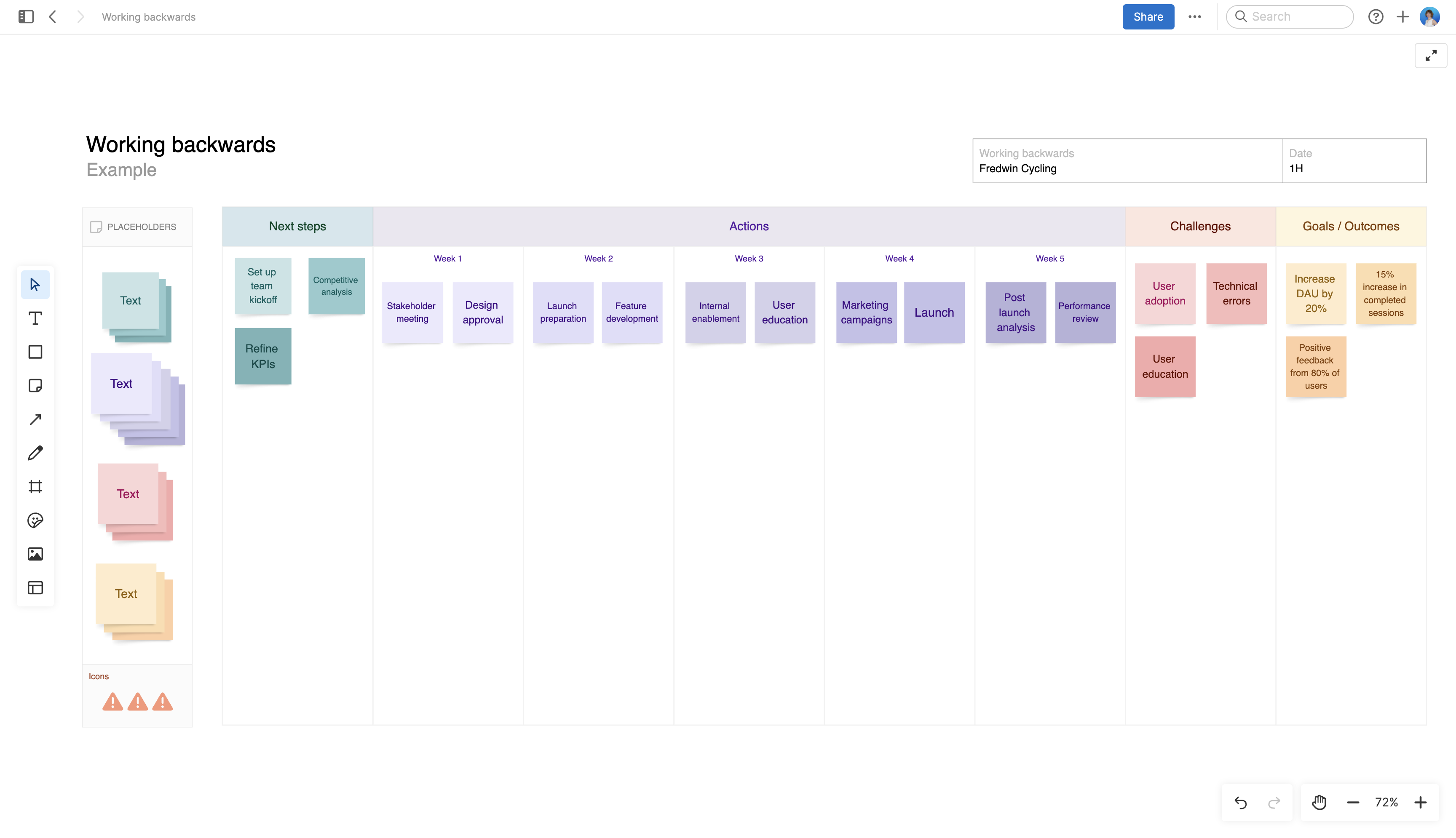Working backwards template
Work backwards to determine the steps needed to achieve your goal
Use template
About the working backwards template
If you want to be successful in business and product building, you need to develop a high-level plan with key milestones that are achievable. A workback schedule can be a helpful method for doing so.
Workback schedules often reveal overlooked dependencies and potential bottlenecks. The process of mapping tasks backward can uncover connections that might have been missed in a forward-planning approach.
Break milestones into smaller tasks as needed, assigning responsibilities and deadlines. Regularly reassess and adjust the schedule to accommodate changes or unforeseen challenges.
Best practices
Gain clarity on timelines, dependencies, and realistic milestones.
Define the end goal Start by articulating the desired outcome you want to achieve — such as solving a complex customer problem or planning a product launch. Define goals to clearly establish what success looks like.
Work backwards Start from the target launch date and work backwards to identify the milestones, deadlines, and tasks required at each step of the process.
Identify challenges Capture any issues — like technical limitations, resource constraints, or regulatory requirements — that might impact your success. Understanding these constraints early in the planning process can prevent issues later on.
Encourage collaboration Share your whiteboard with cross-functional stakeholders to gather their input. Considering different perspectives results in a more comprehensive and well-rounded plan.